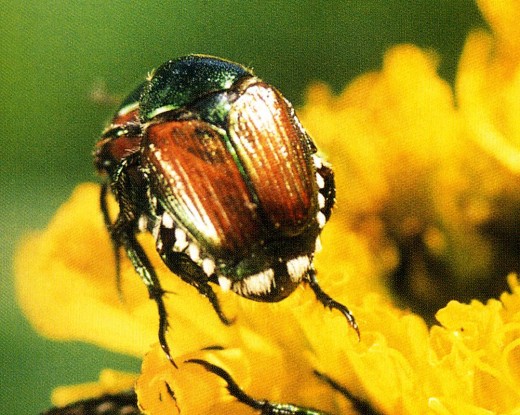Pest-Free Garden

Pesky Bugs in your garden
To cultivate a pest-free garden you need to get the soil right, choose plants that fit your site, and choose resistant flower varieties. The best defense is to strike before any problem appears. The plan should be to encourage our allies and outwit our enemies. When you do see an infestation of bad bugs on your plants and flowers, this means there is something out of balance in your organic garden. Identify the problem and see if there is an alternative to spraying. Even the safest sprays can harm some creatures and flowers.
With the tips and shortcuts below you can get back to square one and have a pest-free garden.
1. Choosing the right spot to plant will make your plants healthier and less susceptible to pests. Take into consideration the amount of sun, water and condition of soil.
2. Build raised beds to offer good drainage as well as better aeration. Raised beds are easier to keep weeded and bug free. They are a great solution for not so perfect sites and soils.
3. Using organic techniques like adding compost to your beds will give you healthier soil, which in turn will give you healthier plants that will be better able to stand up to infestation.
4. Promote good air circulation by giving plants adequate space between each other.
5. Choose plants that are less prone to problems than others, such as the purple coneflower that aren't bothered by pests at all. The beneficial butterflies love the blooms and the birds just love the seeds in the fall.
6. If you are having problems with certain bug pests, foil them by planting the flowers and vegetables in a different spot every year.
7. Plant pollen-and nectar-producing flowers as food sources for beneficial insects. Daisies, coriander, dill, fennel, goldenrod, mint, sweet alyssum, and yarrow, are some of the common plants that beneficial insects favor.
8. Always make sure to pull out any badly infested plants as soon as possible during the growing season and do not put into your compost pile.
9. Keep your garden free of weeds and dead plant debris, and make sure to remove spent plants at the end of the season. This will eliminate the bad bugs that winter over.
10. Scald individual weeds, such as ones growing in hard to get places like sidewalk and patio cracks, by pouring boiling water in a steam over the weed. Some weeds may take 2 or 3 times. I have one of those around the home steam machines which work well.
11. Just plain vinegar applied with a spray bottle can kill many common leafy weeds. Try to get a high percent acidity. If it is around 5 percent acidity you may have to do a few times. Be careful that you do not spray you good flowers.
12. Clean your cutting shears with rubbing alcohol after cutting off any diseased parts of your flowers or you may spread disease to healthy plants.
13. Avoid bug zappers because they also kill the good bugs. In the end they do more damage then good. Because of the light you will be attracting more pesky bugs into the area thus creating a vicious circle.
14. Plant herbs with your flowers that deter some pests like...
- Anise: Repels aphids
- Artemisia: Repels flea beetles, cabbageworms, slugs
- Basil: Repels flies and other insects
- Catnip: Repels ants, flea beetles (but not cats)
- Coriander: Repels aphids
- Garlic: Repels aphids, Japanese beetles
- Mint: Repels aphids, flea beetles, cabbage pests
- Pot Marigold: Repels asparagus beetles
- Tansy: Repels ants, Japanese beetles, flies
15. Purchase beneficial bugs from your Garden Center like ladybugs, Trichogramma wasps. These wasps fit through the eye of a darning needle.









